
Churches and Cathedrals of Manhattan, New York City - 7
Personal notes and information gleaned following a visit October 2003, and features only the churches which I discovered during my seven days in New York. The churches face in all sorts of directions, the descriptions that follow therefore have ritual directions which assumes the high altar is at the east end of the building. The churches are all Roman Catholic, unless otherwise mentioned, and are featured in the order I visited them.
St Malachy ( 239 W 49th Street)
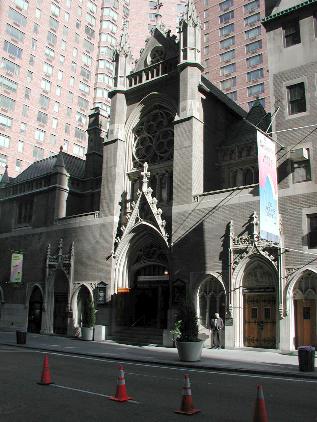 |
Known also as the Actor's Chapel. The parish
was established in 1902. The church is not large and has
no tower. It was begun in 1910 to the designs of Thomas J
Duff. West front with big central portal flanked by two tripartite smaller but equally ornate doorways. Inside clerestoried nave and aisles but no chancel: wider outer north aisle, added 1920 as The Actors' Chapel. Recent changes have seen the introduction of a central altar and re-arrangement of pews around it.
|
St Mary the Virgin, Times Square (Episcopal) (145 W 46th Street)
| The first church stood at 228 W 45th St
(between 7th & 8th Aves), and was built 1868-70 but
so successful was the "High Church" practice
and the charisma of the rector Thomas McKee Brown that a
larger building was soon needed. The present church was
begun on a new site between Broadway/Seventh Avenue
(Times Square) and Sixth Avenue in 1894 and was completed
in December 1895. The architects were Pierre Le Brun of
Napoleon LeBrun and Sons and in style it is a decidedly
French Gothic. It occupies the complete block between
46th and 47th Streets but apart from the west (actual
south) facade and a small porch from 47th Street, little
can be seen. The church is steel-framed and has a nave and chancel in one terminating in an east apse. Inside time must be allowed for your eyes to adjust to the gloom, the air usually heavy with incense. Low arches lead into the aisles and ambulatory, and above a rather unsatisfying blank expanse of wall below the tall two-light clerestory windows. Shallow side arches off the aisles too with curved triangular windows of varied design above the openings. Wide impressive main vault, with the division between the nave and chancel marked by rood beam. The vault was painted blue withgolden stars during the restortion of 1996-97 by J Lawrence Jones and Associates.
|
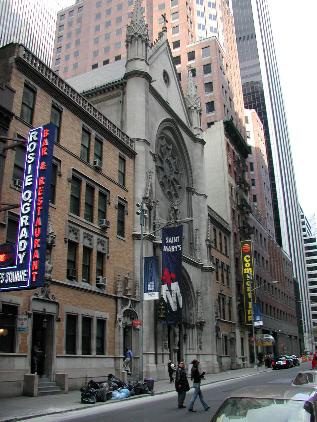 |
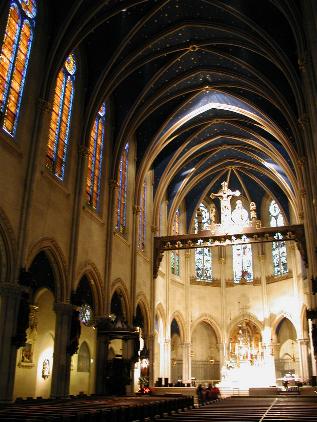 |
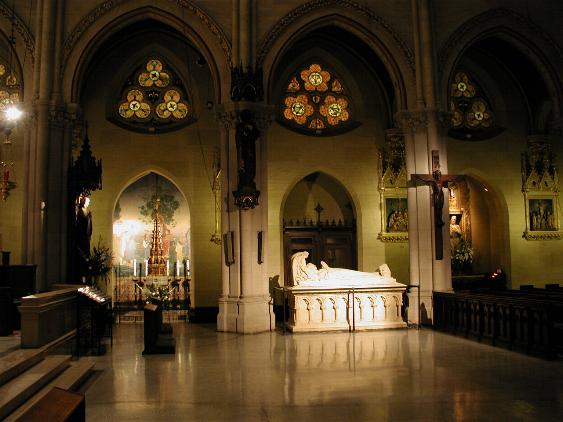 |
Holy Innocents (128 W 37th Street)
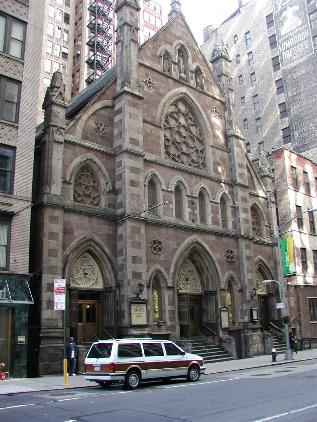 |
The parish was established in 1866 and the
church completed in 1870. The church is in a rather odd
Gothic style, but one with considerable charm. The
architect was Patrick C Keely. The west front (actual
north) has three windows completely filled by tracery,
the central one above a row of four lancets. Three portals lead into a vestibule under the gallery but the church itself also has side galleries. Very tall and thin arcades with paired (metal?) columns rise over the galleries which are supported on thicker columns. The east two bays however have these paired columns the full height as they have no galleries. A small clerestory rises between the springers for the plaster groined ceiling. No window behind the main altar but instead Constantino Brumidi created a monumental fresco of the Crucifixion. Soon after Brumidi was commissioned to decorate the Great Rotunda of the U. S. Capitol Building with magnificent frescoes. I found the church open but, as you can see from the sneakily taken picture, with mass being celebrated. Sorry guys! |
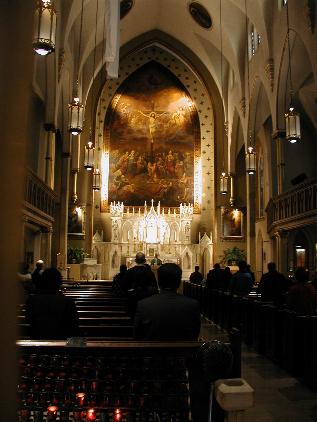 |
St John the Baptist (210 W 31st Street)
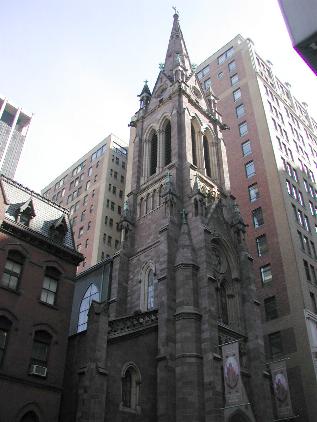 |
The church was founded in 1840 but the
present building was designed by Napoleon LeBrun in 1871
and completed in 1872. Brownstone facade with centrally
placed French Gothic tower and spire. Compare this with
the flimsy appearance of the side walls, glimpsed in the
picture, left. Inside there is no division between nave and chancel which terminates in an east apse. Thin arcades, blank triforium and large clerestory windows combine with cross-vaulting probably of plaster. The arches of the apse are blank and the easternmost window is a small rose. I found the church open. |
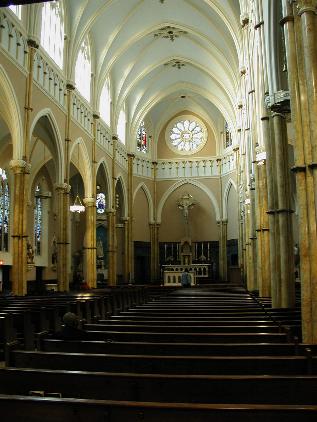 |
<BACK> <MANHATTAN INDEX> <NEXT>
page updated 25th August 2007